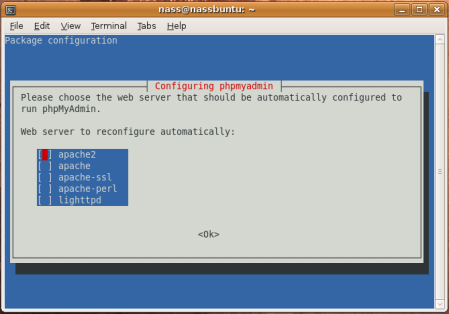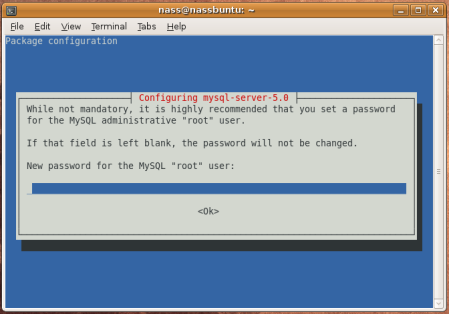Installing Apache
1. Open Terminal (Application -> Accessories -> Terminal) and execute the following command:
sudo apt-get install apache2
2. When the setup is complete you can check if the Apache is working properly by pointing your browser to http://localhost. If you see the text “It works!”, it means Apache is working just fine.
3. Towards the end of the installation if you see a message like this inside Terminal, “Could not reliably determine the server’s fully qualified domain name, using 127.0.1.1 for ServerName“, you can fix this by executing the following command. It will open Gedit (text editor).
gksu gedit /etc/apache2/conf.d/fqdn
4. When Gedit opens, type “ServerName localhost” inside the file and click Save. Then close the file.
Installing php5
1. Inside Terminal, execute the following command:
sudo apt-get install php5 libapache2-mod-php5
2. When setup is complete, you have to restart Apache so that php5 will work on Apache. Execute the following command in Terminal:
sudo /etc/init.d/apache2 restart
3. You can now test to see if php5 works with Apache. To do this you can create a new php file inside your /var/www/ folder. (The text in red is the filename. You can put any name.)
sudo gedit /var/www/nass.php
4. The command above will open Gedit. Just type in the following php code, save and close the file:
<? phpInfo(); ?>
5. Now point your browser to “http://localhost/nass.php” and see if you can see the text “yoo hooo!” and a lot of information about your php5 installation. If you see that, it means your have successfully installed php5.
Installing MySQL
1. Inside Terminal, execute the following command:
sudo apt-get install mysql-server libapache2-mod-auth-mysql php5-mysql
2. Towards the end of the installation you will be prompted to set your root or admin password (see pic below)
Installing phpMyAdmin
1. Inside Terminal, execute the following command:
sudo apt-get install phpmyadmin
che2 (see pic below).
2 During the installation you will be asked to select the webserver that would be used to run phpMyAdmin. Select Apa

3. After the installation is over execute the following command to copy the phpmyadmin folder into the /var/www/ directory. (By default it is installed in /usr/share/phpmyadmin/ directory.)
sudo ln -s /usr/share/phpmyadmin/ /var/www/phpmyadmin
4. Now you can go to the phpMyAdmin login page by pointing your browser to: http://localhost/phpmyadmin/index.php
The username for MySQL and phpMyAdmin is “root”. The password will be what you set in step 2 (under installing MySQL).
That’s it! Now you’ve successfully installed Apache 2 webserver, php5, MySQL and phpMyAdmin on Ubuntu.









These facts are really interesting. Few of them were well known for me but many of them were brand new for me too!
ReplyDeleteI will print this one out and show to my friends because they will be definitely interested in that. Thanks!
phpMyAdmin